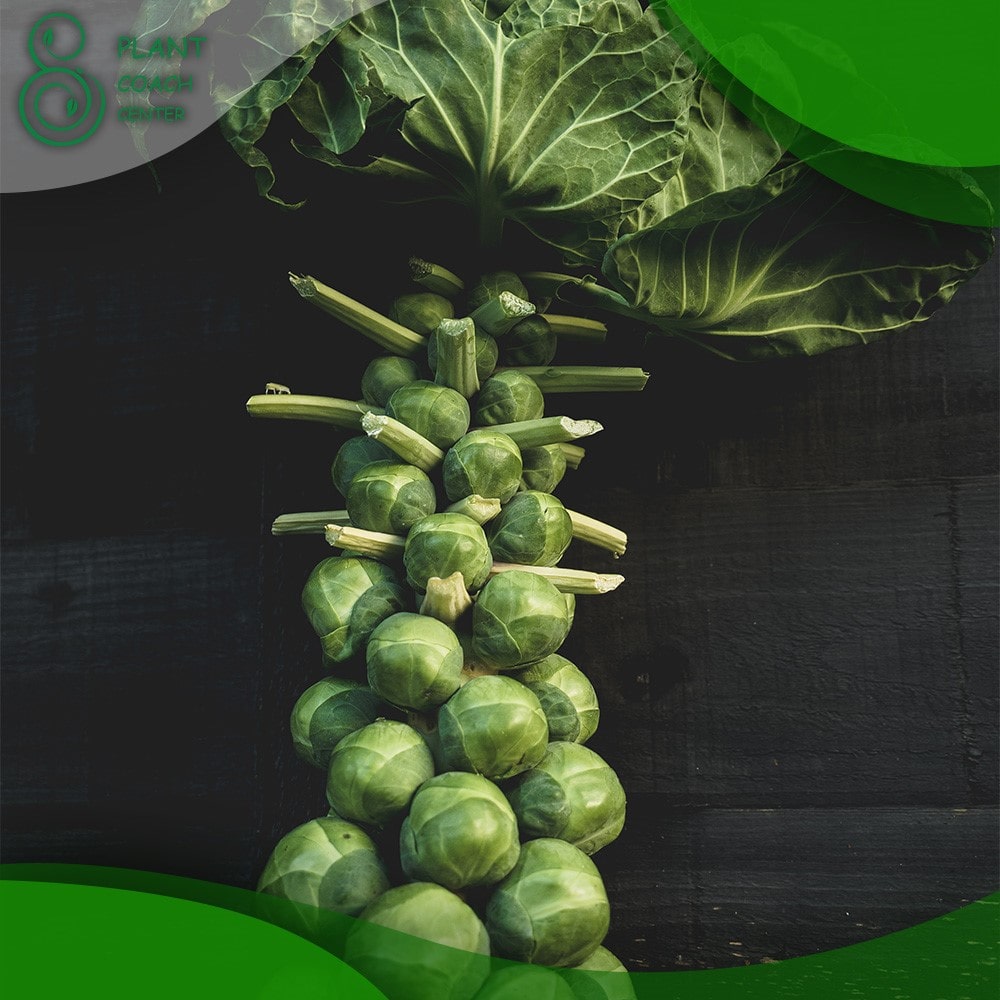When Do You Harvest Brussels Sprouts?
Welcome to Brussels Sprouts, where miniature cabbage-like delights flourish and tantalize taste buds. These petite cruciferous vegetables, often underestimated, have been captivating gardeners and food enthusiasts for centuries. However, unlocking their true potential lies in mastering the art of timing: knowing precisely when to harvest these green gems.
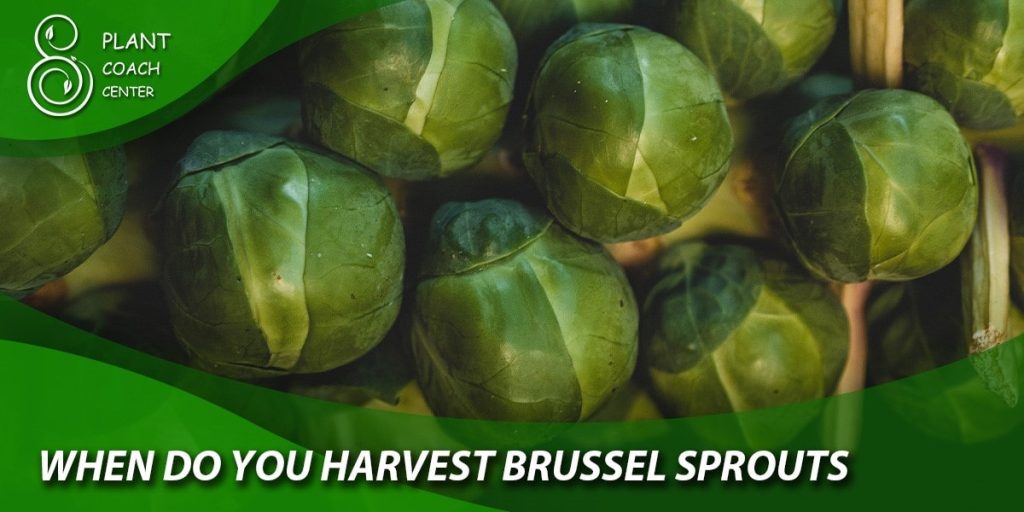
Whether you’re a seasoned gardener or a curious home cook eager to explore new culinary horizons, understanding the optimal harvesting period for Brussels sprouts is vital to unlocking their rich flavor and nutritional value. In this article, we will delve into the intricacies of Brussels sprout’s maturation stages, learning how to decipher nature’s subtle clues and harvest these delectable morsels at their peak.
Join us on this journey to discover the perfect moment to pluck these delightful delights from the garden and experience the authentic taste of freshness and satisfaction on your plate. So, let’s dive into the world of Brussels sprouts harvesting and reap the rewards of patience and precision in every bite.
Unearthing the Flavor: The Perfect Timing for Harvesting Brussels Sprouts
Harvesting Brussels sprouts at the ideal moment is a culinary art that can make all the difference in the world of flavors. These miniature cabbages undergo a remarkable transformation as they grow and mature, developing a sweet and nutty taste that can be genuinely savored when picked at the right time.
Understanding the Growth Stages
To master the perfect timing for harvesting Brussels sprouts, it’s essential to grasp the growth stages of these delightful vegetables. Brussels sprouts start as tiny buds along the length of the stalk, tightly nestled in the leaf axils. As the plant grows, the buds gradually enlarge, and monitoring their progress closely is crucial.
Observing the Size
One of the primary indicators of readiness for harvest is the Size of the sprouts. They are generally ready for picking when they reach 1 to 1.5 inches in diameter. At this point, the flavor is at its peak, and the texture is tender yet firm. Avoid waiting too long, as oversized sprouts can taste bitter and have a less appealing texture.
The Influence of Frost
Interestingly, exposure to light frost can improve the flavor of Brussels sprouts. The plant converts starches into sugars as the temperature drops, resulting in a sweeter taste. However, avoid exposing the nodes to prolonged frost, as it can damage the outer leaves.
Examining the Color
Another visual cue is the Color of the sprouts. Mature Brussels sprouts boast vibrant green hues, indicating their readiness. If the Color appears pale or yellowish, the nodes may need more time to develop their full flavor potential.
Bottom-Up Harvesting
When harvesting Brussels sprouts, it’s best to start from the bottom of the stalk and work your way up. Begin by picking the lower nodes first, as they mature earlier. This approach ensures that you enjoy the best flavor from each individual sprout.
Keeping an Eye on Time
Timing is everything in the world of Brussels sprouts harvesting. From the moment the buds form to maturity, the timeline can vary depending on the climate and growing conditions. Keep track of the planting date to estimate when the sprouts might be ready for harvest.
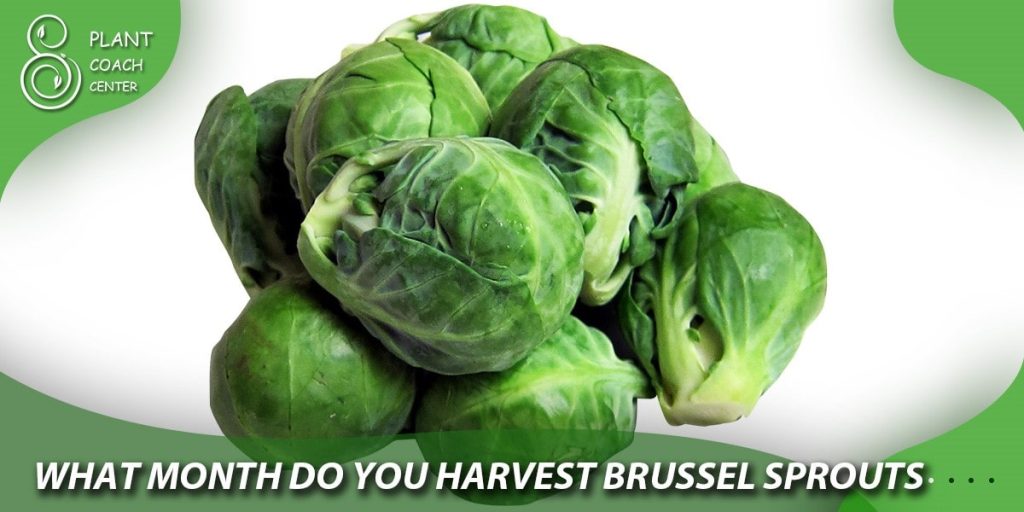
Reading Nature’s Cues: How to Determine the Optimal Harvesting Period for Brussels Sprouts
Mother Nature has a way of communicating with us, and when it comes to harvesting Brussels sprouts, she leaves subtle yet telling cues for the attentive gardener or home cook. Understanding these natural signals is essential to identify the perfect harvesting period, ensuring you savor these delectable mini cabbages’ finest flavors and textures.
Tracking Planting Date
To begin your journey of reading nature’s cues, it’s crucial to keep track of the planting date. Brussels sprouts typically require around 90 to 100 days to reach maturity from the transplanting time. While this can vary depending on the variety and growing conditions, it gives you an estimated timeframe to anticipate the harvesting phase.
Patience is a Virtue
Just like fine wine, good things come to those who wait. When it comes to Brussels sprouts, exercising patience is critical. These tiny buds undergo gradual growth and flavor development, so taking time is essential. Waiting for the right time ensures a more flavorful and enjoyable harvest.
Feeling the Firmness
A hands-on approach can be pretty revealing when determining the optimal harvesting period. Gently squeeze the sprouts between your fingers to assess their Firmness. Nodes that feel solid and compact are usually ready for picking, while those that seem loose or soft may need more time to mature.
Monitoring the Lower Leaves
Observing the condition of the lower leaves can provide valuable insights into the readiness of Brussels sprouts. As the nodes near maturity, the lower leaves may begin to yellow and naturally wither. This is a positive sign that the plant has focused its energy on producing flavorful sprouts.
Watch for Tightness
When Brussels sprouts are primed for harvest, their tightly packed buds form a neat, uniform pattern along the stalk. As you inspect the plant, take note of any sprouts that appear loosely spaced or irregular in Size, as they may need to be fully matured.
Taste Testing, if Possible
If you have the opportunity, consider taste-testing a sample Brussels sprout from the plant. Sampling one sprout can provide valuable insights into its flavor profile. If it meets your expectations in taste and tenderness, the rest of the sprouts are likely ready for harvesting.
From Seed to Plate: Understanding the Maturation Stages of Brussels Sprouts
Embarking on a journey with Brussels sprouts from seed to plate is a fascinating exploration of nature’s ingenuity and the gardener’s dedication. These tiny yet flavorful cabbages go through several distinct maturation stages, each playing a pivotal role in shaping their taste, texture, and overall culinary appeal. Let’s delve into these stages and gain a deeper understanding of the magical transformation of Brussels sprouts.
Germination and Seedling Stage
The journey begins with the humble seed. Planting Brussels sprouts seeds in well-drained, nutrient-rich soil and providing ample sunlight and moisture are essential for successful germination. During this stage, the seeds sprout, and delicate seedlings emerge, showcasing their first set of true leaves.
Leafy Growth and Vegetative Stage
As the seedlings mature, they enter the vegetative stage, characterized by vigorous leafy growth. During this phase, the plant allocates energy toward building a robust structure, strengthening its root system, and developing a profusion of green foliage. Adequate watering, regular weeding, and fertilization support the plant’s healthy growth.
Formation of Buds
As the Brussels sprouts plant continues to flourish, it shifts its focus towards the formation of buds. These tiny, compact buds appear along the length of the stalk, nestled within the leaf axils. Each bud represents a potential Brussels sprout that will soon contribute to the plant’s culinary bounty.
Maturation and Sweetening
As the buds continue to develop, they undergo a captivating transformation during maturation. Starches within the sprouts are converted into sugars, resulting in a sweeter and more flavorful taste. Cooler temperatures and exceptionally light frost can enhance this sweetening process, contributing to the exceptional taste of the harvested sprouts.
Harvesting Time
Finally, the Brussels sprouts reach their optimal harvesting period. The once-small buds have grown into miniature cabbages, ranging from 1 to 1.5 inches in diameter. This is when the flavors and textures peak and the sprouts are ready to be lovingly picked from the plant for culinary delights.
Culinary Delights
With the harvest complete, it’s time for the true magic of Brussels sprouts to shine in the kitchen. Whether roast them to caramelized perfection, sauté them with savory spices, or steam them to preserve their natural essence, these versatile mini cabbages will tantalize your taste buds and impress your guests.
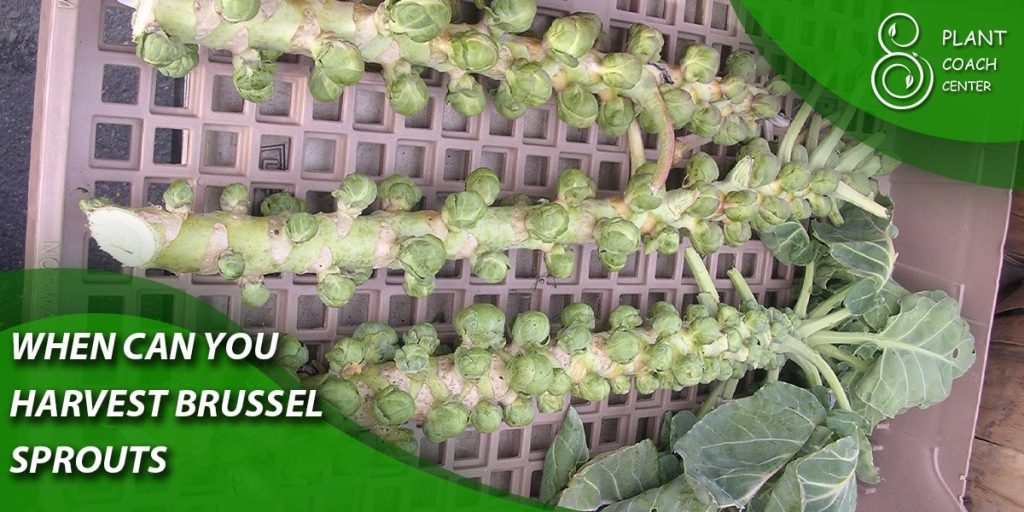
Timing Matters: Enhancing Flavor and Nutrition by Picking Brussels Sprouts at the Right Time
Regarding Brussels sprouts, the adage “timing is everything” couldn’t be more accurate. The difference between picking these miniature cabbages at their peak of perfection versus prematurely or too late can significantly impact their flavor and nutritional content. By understanding the importance of timing in harvesting Brussels sprouts, you can unlock a world of enhanced taste and health benefits.
Maximizing Flavor Potential
The flavor of Brussels sprouts is a delicate balance of sweetness and nuttiness, and achieving this perfect blend hinges on picking them at just the right time. When the shoots reach their ideal Size of 1 to 1.5 inches in diameter, they have developed their complete flavor profile. Harvesting them at this stage ensures a tender, crisp texture and a taste that is both satisfying and delectable.
Retaining Nutritional Value
Brussels sprouts are powerhouses of nutrition, packed with essential vitamins, minerals, and antioxidants. However, these nutrients can be susceptible to degradation over time. Harvesting the sprouts at their prime helps preserve their nutritional content, ensuring you reap the maximum benefits from each delectable morsel.
Avoiding Bitterness and Toughness
As Brussels sprouts grow beyond their optimal Size, they may develop a bitter taste and a more rigid texture. Bitterness arises from accumulating certain compounds, which can overpower the natural sweetness. By harvesting, you can avoid this bitterness and savor its delightful essence before the sprouts become too large.
Harnessing the Sweetening Effect of Frost
One intriguing aspect of Brussels sprouts is their response to colder temperatures. Exposing the plants to light frost can stimulate a natural sweetening process. As the cold triggers the conversion of starches into sugars, the flavor of the sprouts is enhanced, adding a delightful touch to your culinary creations. However, it’s essential to be mindful of frost exposure duration, as extended exposure can harm the outer leaves.
Considering the Growing Conditions
The timing of Brussels sprouts harvesting can be influenced by various factors, including the climate, weather patterns, and planting dates. Adapting to your specific growing conditions is essential, adjusting your harvesting schedule accordingly. Keeping a garden journal or utilizing digital gardening tools can help you keep track of planting and harvesting dates to optimize your Brussels sprouts’ growth.
The Reward of Patience
In Brussels sprouts harvesting, patience is a virtue worth embracing. Rushing the process and picking them too early may lead to underdeveloped flavors and less appealing textures. Waiting for the perfect moment may require restraint, but the reward is a culinary experience that delights the senses and nourishes the body.
Harvesting Tips and Tricks: Preserving the Quality of Brussels Sprouts for the Kitchen
Harvesting Brussels sprouts is a rewarding experience and a crucial step in ensuring the best possible flavor and quality for your culinary creations. Packed with nutrients and versatility, these tiny cabbages deserve special attention during harvesting to preserve their freshness and taste. Let’s explore some valuable tips and tricks to help you harvest and store Brussels sprouts for the kitchen.
Selective Picking
When harvesting Brussels sprouts, it’s essential to adopt a selective approach. Start by picking the lower nodes first, as they mature earlier than the ones near the top. Gently twist and snap the sprouts off the stalk, leaving the leaves and upper buds intact for further growth. This selective harvesting technique allows the remaining nodes to continue developing, extending your harvest season.
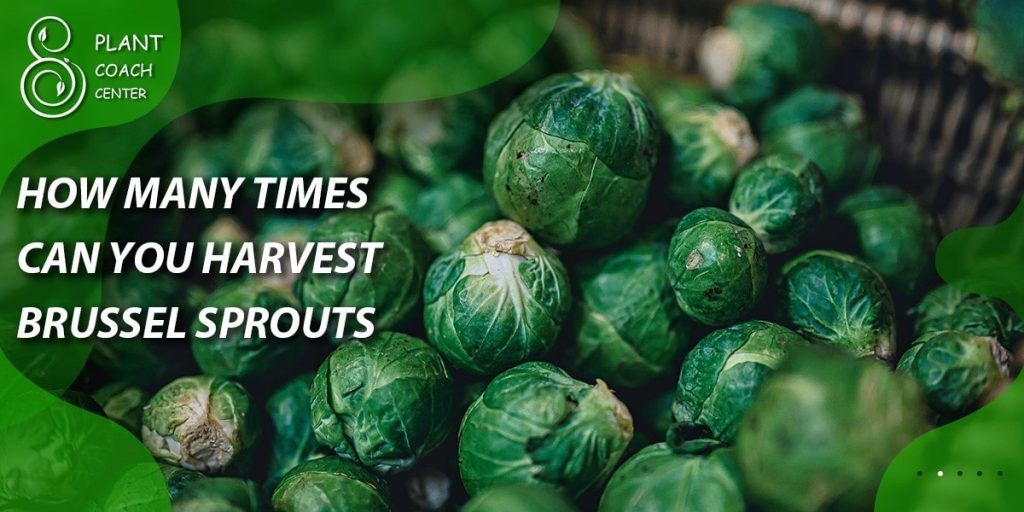
Harvesting Regularly
Brussels sprouts have a relatively extended harvesting period, sometimes spanning several weeks. To make the most of your crop, consider regularly harvesting as the nodes reach their ideal Size. This approach ensures you enjoy a steady supply of fresh sprouts without compromising flavor or quality.
Optimal Harvest Time
Timing remains critical in harvesting Brussels sprouts to maximize their taste and nutrition. As previously mentioned, the ideal Size for Picking is around 1 to 1.5 inches in diameter. Harvesting the sprouts when they are firm, compact, and vibrant green ensures you capture the peak of flavor before any potential bitterness develops.
Handling with Care
Brussels sprouts are delicate vegetables that require gentle handling during harvesting. Avoid dropping or throwing them into containers, which can cause bruising and damage their texture. Treat these miniature cabbages with Care and respect, preserving their pristine appearance for your culinary delights.
Cleaning and Preparing
Once you’ve harvested your Brussels sprouts, cleaning them thoroughly before Storage or cooking is essential. Rinse the sprouts under cool, running water, removing dirt or debris. Trim the stem ends if necessary, but avoid cutting into the buds, which can cause nutrient loss and spoilage.
Proper Storage
Proper Storage plays a significant role in preserving the quality of harvested Brussels sprouts. For short-term Storage, place the cleaned and dried sprouts in a perforated plastic bag and keep them in the refrigerator’s crisper drawer. Alternatively, you can blanch the sprouts briefly and freeze them for long-term Storage, maintaining their nutritional value and taste.
Conclusion
In conclusion, as we embark on harvesting Brussels sprouts, we discover that timing truly matters in unlocking their full potential. By understanding the maturation stages, reading nature’s cues, and exercising patience, we can savor the rewards of these miniature cabbages’ flavor, nutrition, and culinary delights.
From seed to plate, nurturing and harvesting Brussels sprouts is a testament to the harmonious relationship between nature’s wisdom and the gardener’s Care. As you embark on your Brussels sprouts adventure, explore the valuable tips and tricks to preserve their quality and savor the rewards of your efforts in the kitchen.
Embrace the journey of discovering the best moments to harvest and celebrate the joys of patience in gardening. For more gardening insights and delightful recipes featuring Brussels sprouts, visit PlantCouchCenter.com and let the flavors of nature’s bounty enrich your culinary experiences and well-being.
When is the best time to harvest Brussels sprouts?
The best time to harvest Brussels sprouts is when they reach 1 to 1.5 inches in diameter, firm and vibrant green.
Can I harvest Brussels sprouts throughout the season?
Yes, you can harvest Brussels sprouts selectively, starting from the lower sprouts and allowing the upper buds to continue maturing, extending the harvest season.
Do Brussels sprouts taste better after exposure to frost?
Light exposure to frost can sweeten the flavor of Brussels sprouts, enhancing their taste.


